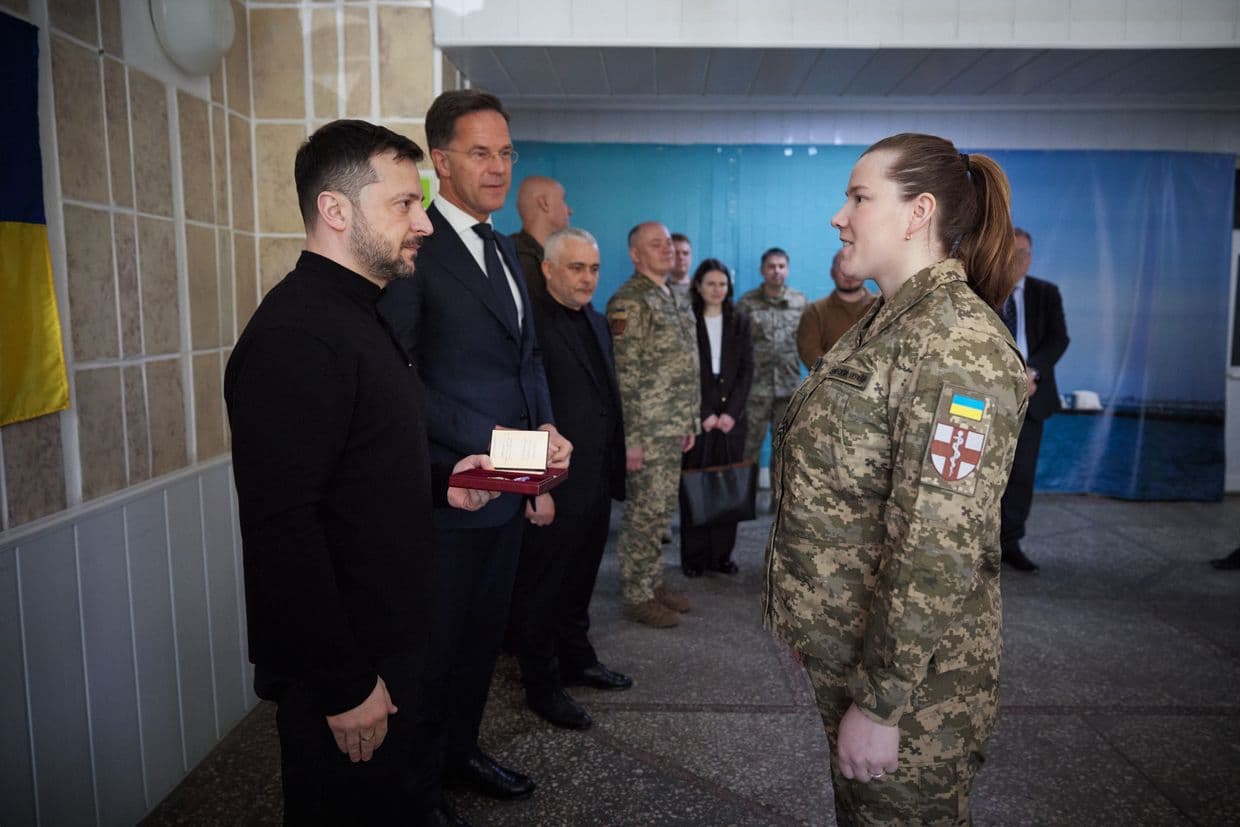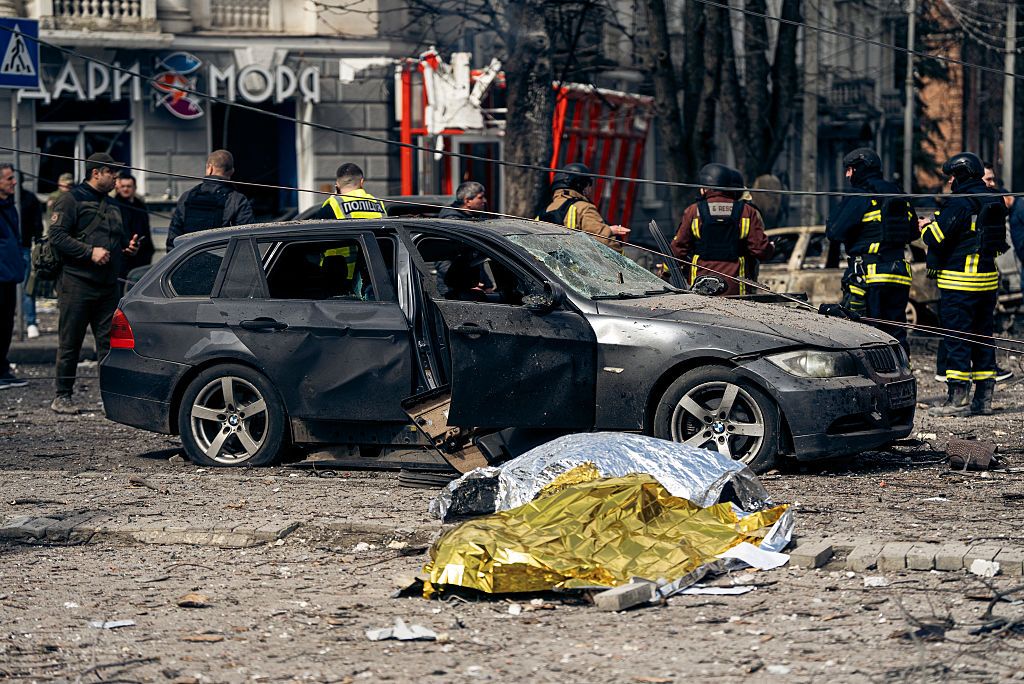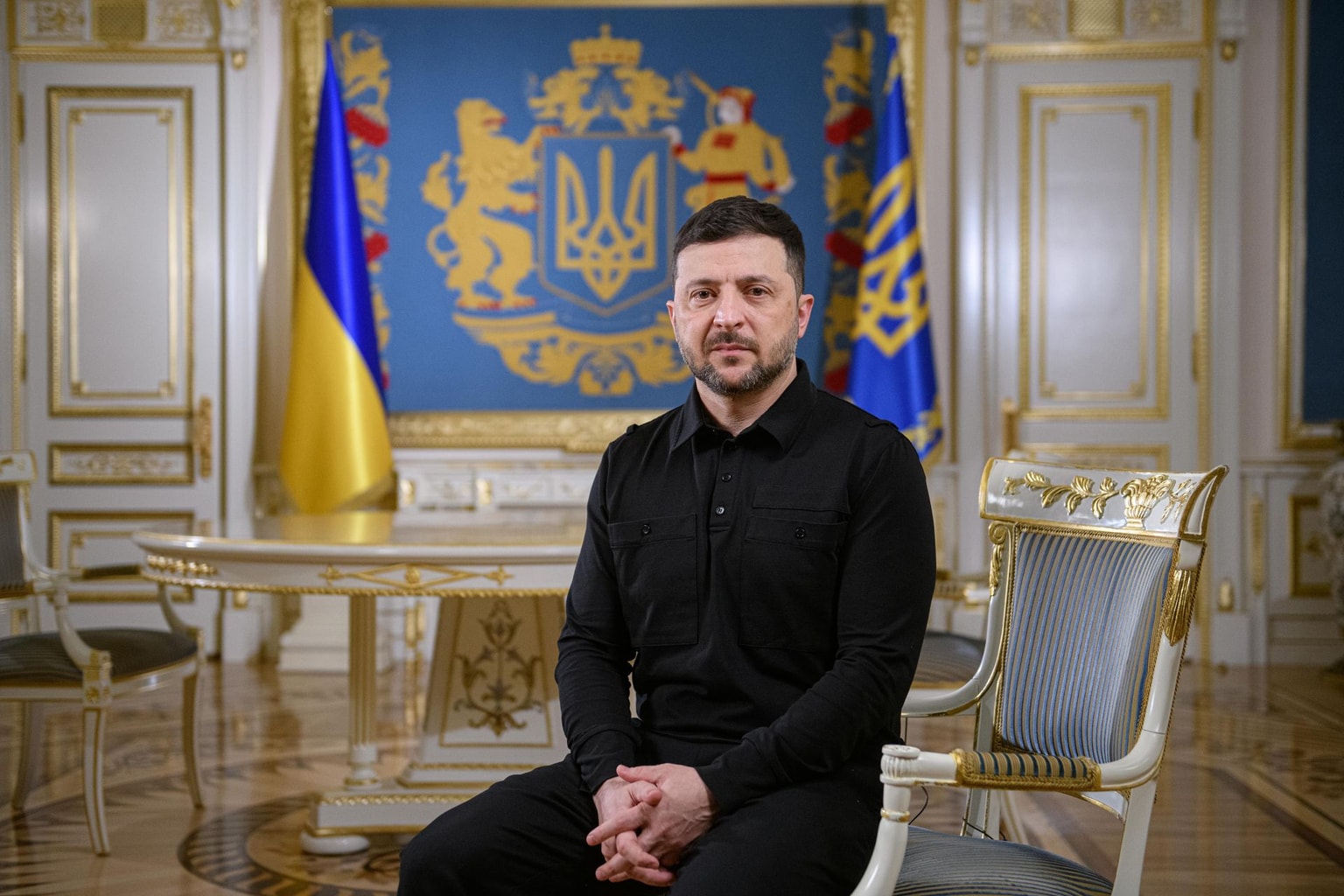Rutte visits military hospital in Odesa, reaffirms support for Ukraine

NATO Secretary General Mark Rutte arrived in Odesa on April 15 and visited a local military hospital alongside Ukrainian President Volodymyr Zelensky.
Rutte’s visit to the southern city came two days after a Russian missile strike on Sumy that killed 36 people and injured nearly 120, marking one of the deadliest attacks in recent months.
During the hospital visit, Rutte and Zelensky awarded state honors to Ukrainian service members. The two leaders also held a joint press conference later that day.
Rutte emphasized NATO’s unwavering support for Ukraine, stating that the alliance continues to provide critical assistance. In the first three months of 2025, NATO partners have contributed more than 20 billion euros to aid Ukraine, he said.
The NATO chief added that the Ukrainian Armed Forces remain the first line of defense of Ukraine, and it is important to ensure conditions that will make it impossible for Russian aggression to be repeated after the war is over.
"We are talking about a long period afterward because we have to understand that a truce is good, but the Armed Forces of Ukraine are the first line of defense, which should always stand on the border of Ukraine. And these initiatives are ongoing," he said.
Rutte mentioned that France and the U.K. are forming a coalition to support Ukraine by providing advice on developing security strategies.
Rutte also stressed that NATO is considering the experience of the 2014 Minsk agreements, which proved ineffective.
"We remember the Minsk agreements 2014 when we thought everything worked, but these agreements were not strong enough, and Putin tried again. And so, as soon as the war is over, we must do everything possible to ensure that Vladimir Putin never even tries to attack or conquer a single kilometer of Ukrainian territory," he added.
Zelensky previously raised alarm at the Munich Security Conference in February, saying Russian troop buildup in Belarus could be aimed not only at Ukraine but also at Poland or the Baltic states.
According to Ukrainian estimates, Russia is preparing to field 15 divisions — up to 150,000 troops — in the region.












